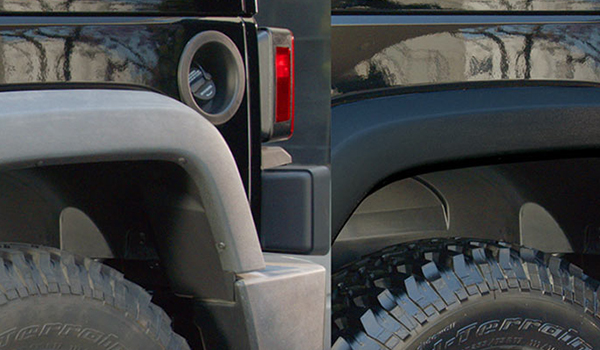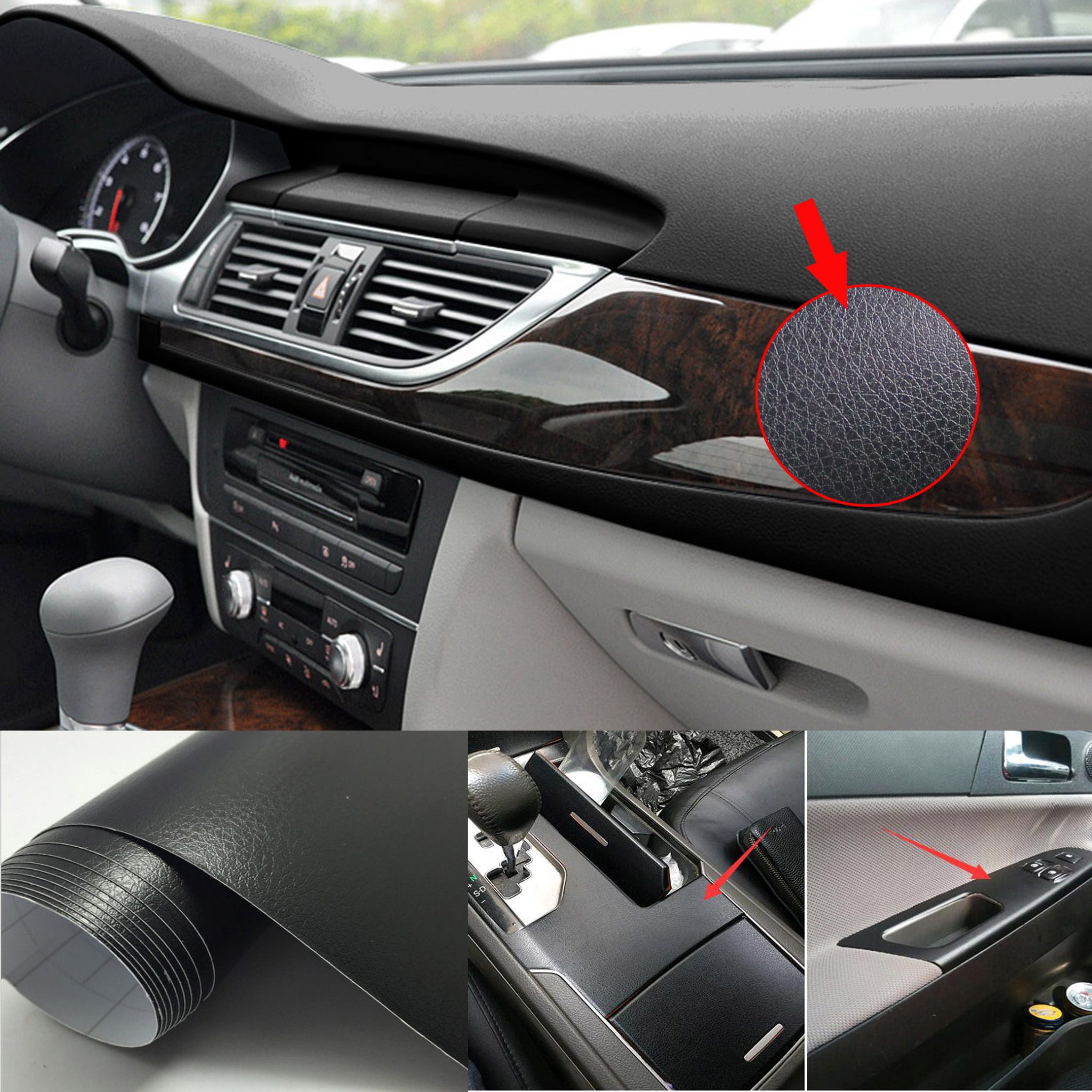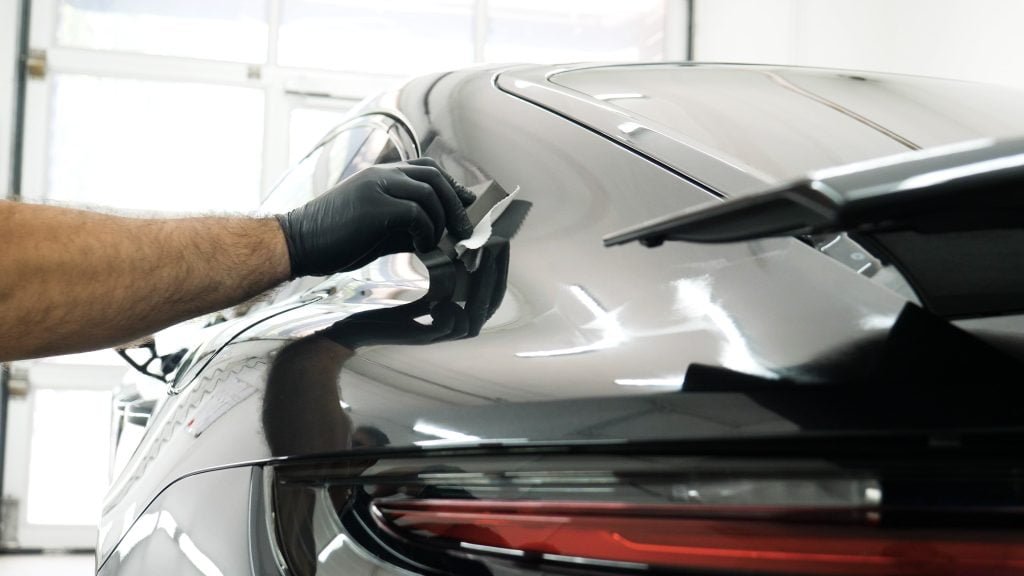In my few but valuable years of detailing, I have learned many things that I have been able to use many times. Some things have been learned easily and some things have taken a little more time. There have been many bumps along the road of learning but overall is a rewarding field. Today, I’m going to talk about a small thing I’ve learned but also something that has, in my opinion, helped me have much more confidence in the final product of any detail I was a part of. I will be focusing on the correct way to use interior dressing today. Dressings can be used in a few different ways on different surfaces. I will go over some of the different uses and how to properly apply the dressing to the different materials that it can be used for.
Water Based Dressing Can be Applied to Multiple Surfaces
With the multiple surfaces that the dressing can be applied to, it should be applied differently with each surface. On some surfaces you can spray the dressing directly onto it, others will need the dressing sprayed on a rag then wiped onto the surface, and on other surfaces dressing may be applied with a sponge and small amount applied to it, then the surface. The last application will mostly be for plastic trimmings on the exterior of the vehicle, I will explain more later.
Applying Dressing on the Exterior of Your Vehicle
I will begin on the exterior of the vehicle. The first and most popular place that a detailer might think of using dressing on the outside of the vehicle is on the tires. You will want to make sure that any surface that is applied with the dressing is thoroughly cleaned. After a good wash and scrubbing of the tires. Be sure to inspect them to make sure they are free of any mud, brake-dust, road debris, and any other contaminants that may have attached itself to the rubber of the wheel. After spraying the dressing to the wheel you can leave it to absorb itself into the tire. A slightly more effective way to make sure that the dressing is more evenly applied to the wheel is to have a soft bristle brush on hand and to run the brush around the tire and to check all the areas of the tire to ensure coverage the tire, it will also allow for quicker absorption.
Another area that dressing can be applied to on the exterior is the plastic trim. Some areas that may have the plastic trim may be found around the bumpers, plastic trim on the wheel wells, if it’s a truck you will most likely see plastic trimming running along the top edges of the truck bed. A good way to apply to these areas is with a sponge or rag. Read our past blog on Restoring Faded Plastic. Instead of spraying directly onto the surface you will apply it to the sponge or rag you are using and then administer to the desired surface. If you have a bottle-top lid, it will make it more easy to control the amount of dressing that you apply to the area.
The final exterior area that I will talk about it the plastic and vinyl areas under the hood on the engine. After a good degreasing and steam clean or pressure washing, spraying dressing on the plastic and vinyl areas will help brighten up and protect the plastic under the hood. You can spray the dressing while the engine compartment is still wet. What I like to do is to spray it and let it sit for 5-10 minutes before I go back to do the touch up work with a rag. As you wipe the dressing into the plastic you will notice the plastic look much more healthy and bright.
Applying Dressing to the Interior of Your Vehicle
Now we will move to the inside of the vehicle. There are a couple surfaces that I will be going over that you can apply dressing to. In my experience, it absolutely NEEDS to be applied the correct way to work and look the way it’s intended. Something that helped me realize how I needed to apply and treat the dressing was realizing that dressing has a very similar texture and feel as hand lotion. When you think about how you apply lotion to your hands. You don’t just squirt it into your hand, spread it, and leave it. That can end up being messy and kind of gross. Not just for you but for people you may come in contact with. For the lotion to work the way it needs to, you have to make sure it is applied correctly so that will will moisturize and protect your skin. As it is with applying dressing, you don’t want to just put it on the surface and leave it. For the dressing to do the job that it’s designed to do, it needs to be applied correctly and have the time put into it that it deserves. Rubbing it into the surface will make all the difference. It won’t take very much time but it makes the surface look better and also will add to the protection and quality of the surface.
Hard Vinyl and Plastic Dressing
The first surface I will talk about are the vinyl and plastic surfaces. These surfaces usually consist of the dashboard and door panels. As with the exterior surfaces, you will want to make sure that the surfaces are thoroughly cleaned. To apply the dressing, spray the dressing onto a folded microfiber rag and rub it into the surface. Take the time to make sure all of the areas are reached and have dressing applied evenly. It’s not a bad idea to look over areas that have had dressing applied to to make sure the surface took to the dressing and that all the desired areas have been reached. A good indicator that the dressing has been well applied is after application is running your finger over the surface and if none of it to very very little comes off on your finger then it has been applied appropriately.
Leather Dressing
The second surface is leather seats. You can also use leather treatment if the condition of the seat requires the leather conditioner. You will also want to make sure that the seats are deep cleaned and are also rubbed into the leather properly. Depending on what kind of leather or vinyl seats there are different kinds of dressings and conditioners to use.
As you’ve seen, dressing will be one of the final steps that are part of the detail. Some areas that you will want to avoid are any areas that the feet touch. It will be tempting but areas that have dressing applied and have a wet shoe touch it becomes very slippery and can make it dangerous for the driver and passengers. Floor mats, running boards on the exterior, and most importantly, the driver pedals. DO NOT apply dressing to the pedals. The steering wheel is another place that can usually be not hit. If you are feeling really ambitious and make sure that the steering wheel is completely dried of any dressing then you may. With as much as the steering wheel is touched, I just try to make sure that the steering wheel is cleaned very well and then feel it out from there as far as the dressing goes.
I hope you learned something about dressing. It is a simple but useful product that can make the vehicle look brand new if used correctly. Safe Travels!!
by Andy Stallings, CD, Operations Manager, Onsite Detail


